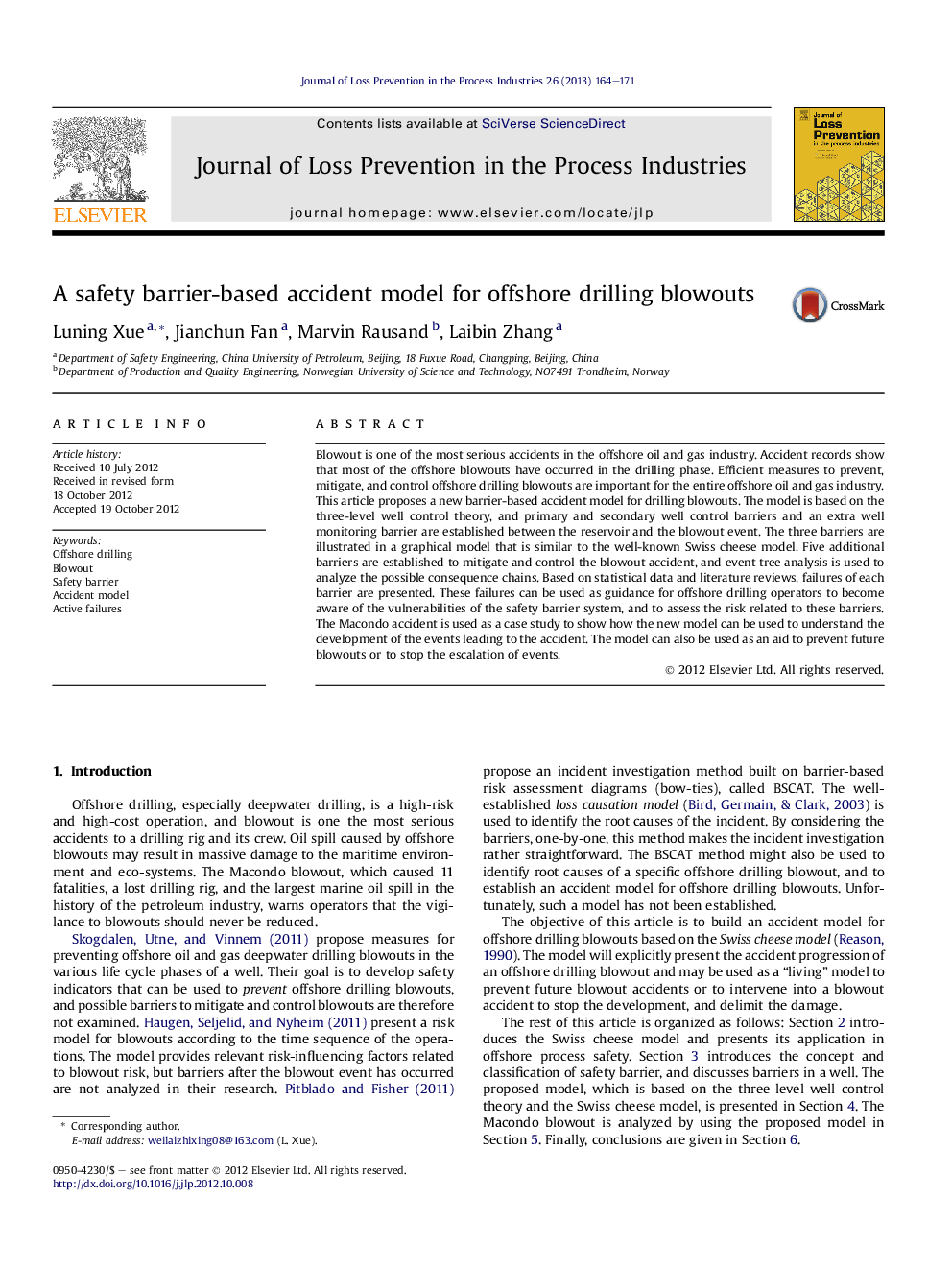| Article ID | Journal | Published Year | Pages | File Type |
|---|---|---|---|---|
| 586960 | Journal of Loss Prevention in the Process Industries | 2013 | 8 Pages |
Blowout is one of the most serious accidents in the offshore oil and gas industry. Accident records show that most of the offshore blowouts have occurred in the drilling phase. Efficient measures to prevent, mitigate, and control offshore drilling blowouts are important for the entire offshore oil and gas industry. This article proposes a new barrier-based accident model for drilling blowouts. The model is based on the three-level well control theory, and primary and secondary well control barriers and an extra well monitoring barrier are established between the reservoir and the blowout event. The three barriers are illustrated in a graphical model that is similar to the well-known Swiss cheese model. Five additional barriers are established to mitigate and control the blowout accident, and event tree analysis is used to analyze the possible consequence chains. Based on statistical data and literature reviews, failures of each barrier are presented. These failures can be used as guidance for offshore drilling operators to become aware of the vulnerabilities of the safety barrier system, and to assess the risk related to these barriers. The Macondo accident is used as a case study to show how the new model can be used to understand the development of the events leading to the accident. The model can also be used as an aid to prevent future blowouts or to stop the escalation of events.
► An accident model for offshore drilling blowouts is proposed. ► Eight barriers to prevent, mitigate, and control blowout are established. ► Swiss cheese model and event tree analysis are integrated to show the “energy flow” in the blowout accident. ► Failures of the eight barriers are presented by fault trees. ► Macondo blowout is analyzed by using the proposed model.
